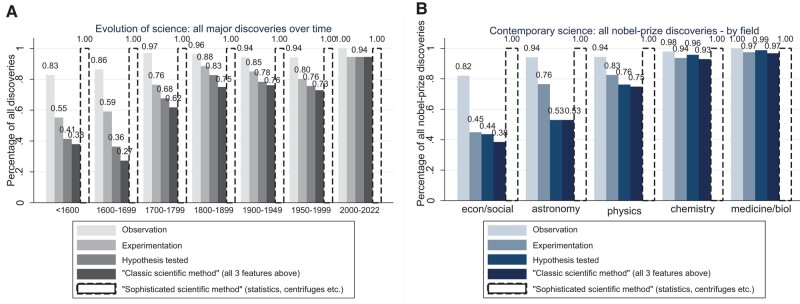Fig. 2.
Share of discoveries made using the classic and the sophisticated scientific method, across time and fields. Data reflect all 761 major discoveries (including all Nobel Prize discoveries) (a), and all 533 Nobel Prize discoveries (b). Each of these discovery-making publications are classified as using observation if the study describes collecting observational data (using eyesight) (bar 1 in the figure), as using experimentation if the study conducted an experiment (bar 2), and as testing a hypothesis if the study formulated and assessed a proposed explanation (rather than conducted exploratory research) (bar 3). The publication is classified as using the classic scientific method if the study applied the three features (bar 4). In contrast, the publication is classified as using the sophisticated scientific method if the study applied a complex scientific method or instrument (bar 5), as defined below. The 10 most commonly used scientific methods and instruments—among all Nobel Prize discoveries—include statistical/mathematical methods, spectrometers, X-ray methods, chromatography, centrifuges, electrophoresis, lasers, (electron) microscopes, particle accelerator, and particle detector. Analysis expanding the data in (b) to include, in addition, the other major discoveries that did not earn a Nobel Prize but were made within the same time period (633 discoveries in total) illustrates comparable results (except for astronomy) and serves as a robustness check, with for example the share of discoveries made applying “the classic scientific method” at 40, 35, 75, 93, and 89% across these five fields, respectively.

